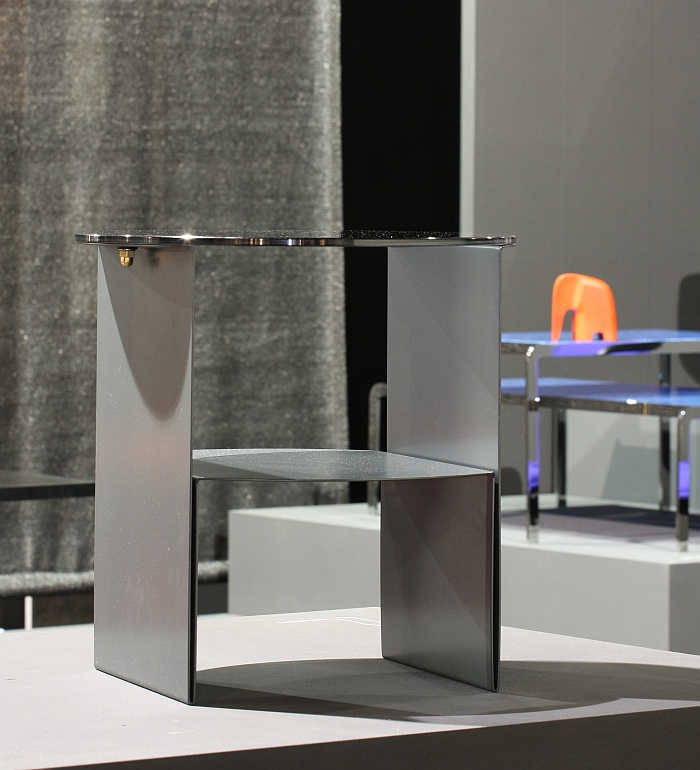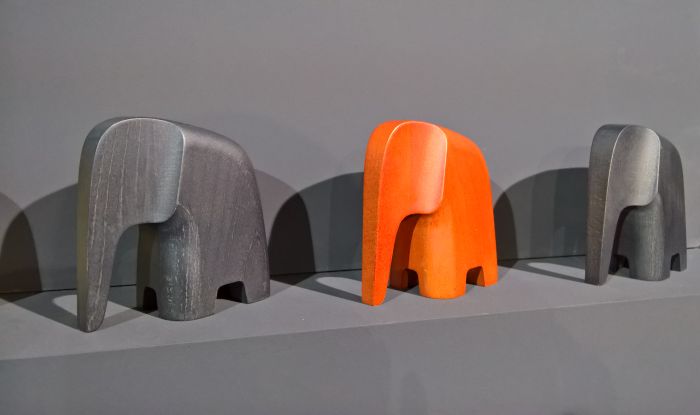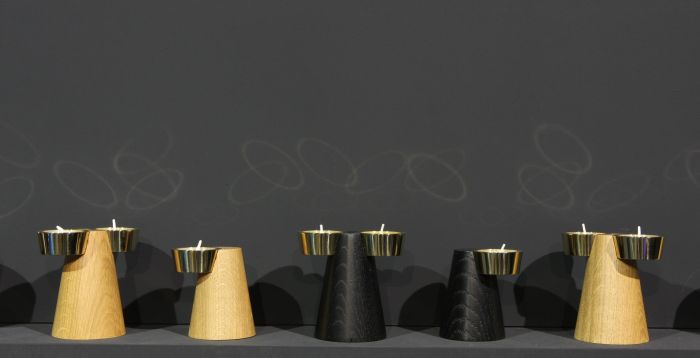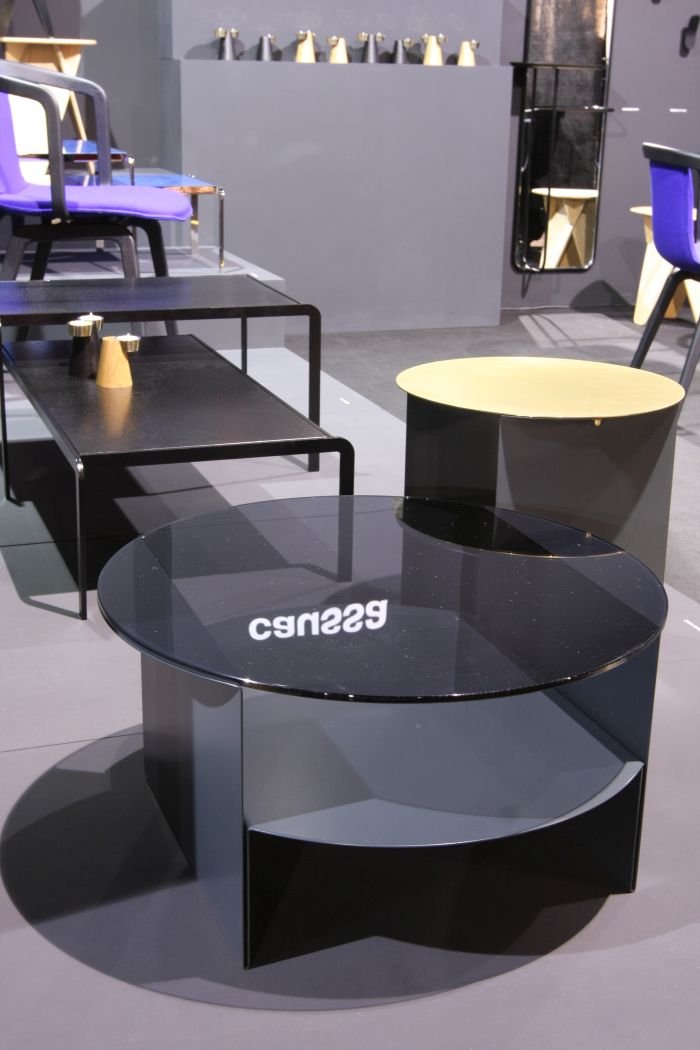Aside from the chance to catch up with, and following the development of, familiar manufacturers and designers, one of the (all too rare) joys of a fair like IMM Cologne is being introduced to the previously unknown.
Among our new discoveries at IMM Cologne was Münster based manufacturer Caussa.
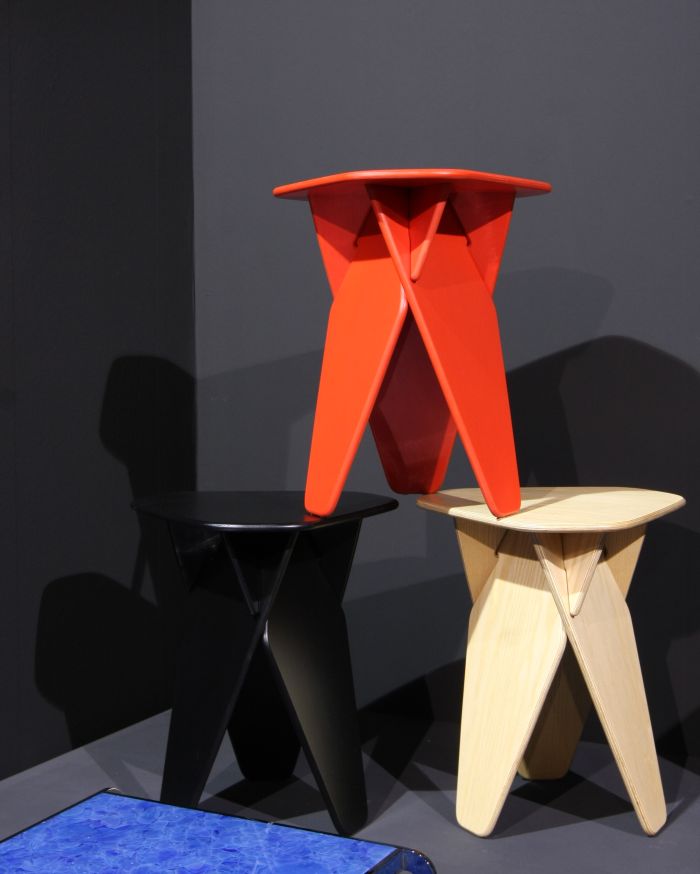
Although only established in 2016, and making their IMM Cologne debut, Caussa bring a wealth of experience with them: Managing Director Jan Drücker in context of marketing/distribution/finance, Creative Director Andreas Kowalewski in context of design: a graduate of the Folkwang Universität der Künste Essen, Andreas has realised projects in cooperation with manufacturers as varied as, and amongst many others, Normann Copenhagen, Ligne Roset or Miyazaki, in addition to having served a tenure as a creative director with Phillips Design. And while principally responsible for the inaugural Caussa collection, it is not exclusively his work, the Eshaku Hook is by Akademie für Gestaltung Münster graduate, Robin Scholtysik, and speaking to Caussa it is clear that the plan is to bring in other designers. Watch this space, as it were.
As we noted in our comments on the Passage Side Table, much as we greatly admired that object, we were initially attracted to the Caussa stand by something else: the Wedge table/stool. An initial attraction that was purely physical. Which sounds awfully shallow and smutty yet, and as so often in those unforgettable moments, it transpired that the attraction wasn't on account of a simple form, but much more the translation of something more existential into a physical form; or as Louis H. Sullivan puts it, "All things in nature have a shape, that is to say, a form, an outward semblance, that tells us what they are ... Unfailingly in nature these shapes express the inner life, the native quality."1 In the case of Wedge that "native quality" is a specially developed construction system which allows for a "Plug'n'Play" tripod. Something which isn't as easy to achieve as it sounds, and which by necessity results in its singular, and very appealing and universally applicable, form.
Positioned by Caussa as both a side table and a stool, we'd have to say that for us the stool option is the more natural, not least because of the high quality and inherent stability of the sitting experience. It is as comfortable as it looks it should be.
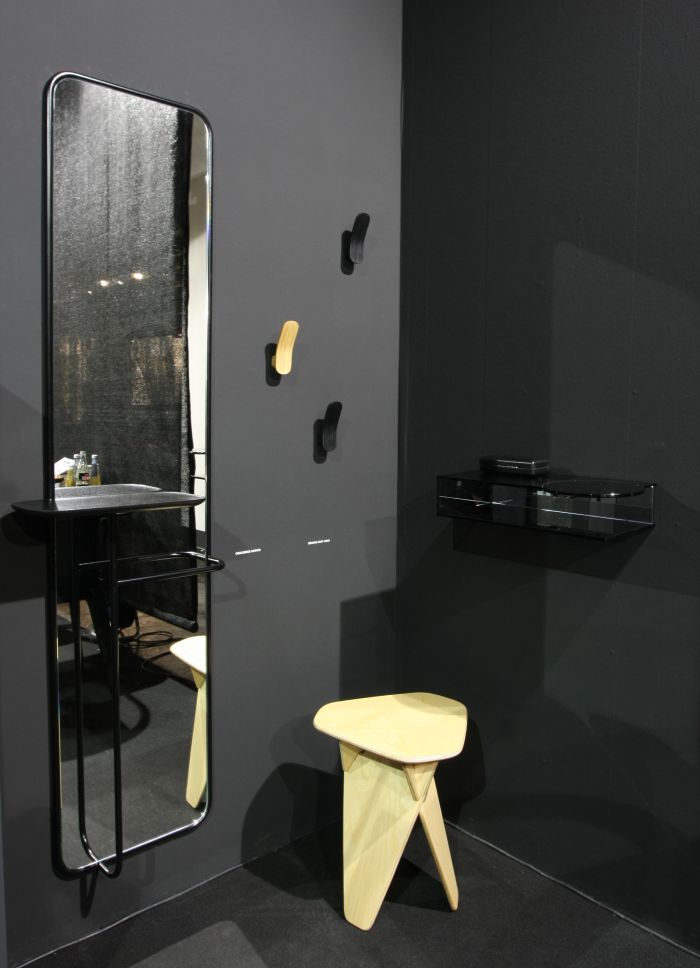
In addition Caussa used IMM Cologne 2018 to formally launch the Elbow side tables, a name based on the sort of play on words that is always going to garner our respect: the frame is formed from four "L" shaped braces, and which much like the Passage tables is another excellent example of an intelligently efficient design, one where our feeling is that the goal was less about creating a table as creating a system to allow the creation of a table. And good design is as much about problem solving as it is form. Something far too many people forget, but which one gets the feeling is integral to the Caussa approach, and which in the context of the "L"bow table - got it now? - has resulted in a delightfully accessible if pleasingly unfamiliar object, an object which achieves an awful lot with surprisingly little. A description which could also be applied to the Concierge Mirror.
There are currently a goodly number of mirrors which also hold/store things on the market, a number which was significantly added to at IMM Cologne 2018. Concierge is for us one of the better examples; whereas many try to achieve their aim through scale, to make the mirror something which dominates the space and thus aims to underscore its validity, Concierge remains compact, reserved, while the shelf and hanging bar despite being the key elements, seem happy to play second fiddle to the mirror. The nature of the steel tube construction bequeathing the whole a nicely formal informal graphic quality.
In addition to such large furniture objects the inaugural Caussa collection also features a series of smaller objects: the aforementioned oak Eshaku wall hooks by Robin Scholtysik; Faro, a family of tea light holders which combine brass and wood not only in a charming fashion but in a very natural and pleasing geometry; and the elephant Oliphant, an object notable not least because a percentage of the profits of his/her sale go to the organisation Rettet die Elefanten Afrikas/Save Africa's Elephants. Not that that is a reason to buy him/her. Buy him/her because it he/she is charming, well proportioned and has an intelligent look in his/her eye which implies you can expect many long, intense, conversations with your new chum. But with the background knowledge that you are helping real elephants.
It's probably not an exaggeration to claim that a majority of contemporary "designer" furniture brands live from when not a single object then certainly from a very narrow range; an indication of if that is the case can be gauged by exploring the whole portfolio in detail, asking why a particular product is there, what was the process that led to its inclusion, consider the attention to detail with which it has been developed and produced. Objects which give the impression of having been added simply to puff up a portfolio, invariably have been. And aren't worthy of further consideration. Much more interesting are those manufacturers where the portfolio is composed of logical, meaningful, objects arising from honest product development, but also where a high degree of attention to detail, technical intelligence and material competence can be found throughout the collection, and not just in a few key objects. With Caussa we have the feeling of such a company. We may be wrong, it's their first collection, they've got a long way to go. But it did make a very good first impression.
1Louis H. Sullivan "The tall office building artistically considered", in Lippincott's Monthly Magazine, Philadelphia, March 1896.
Full details on Caussa, and their collection can be found at http://caussa.de/
